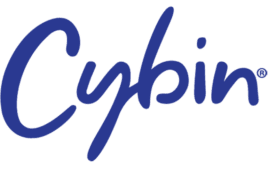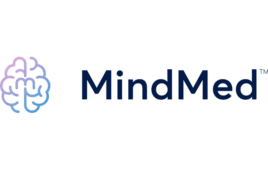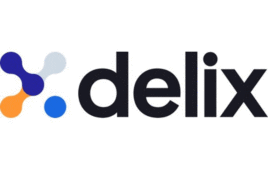
[Adobe Stock]
The potential of faster-acting more effective therapies
While it is difficult to compare the results from disparate clinical trials, some broad patterns emerge when viewing data from current treatment options and drugs now in clinical development for MDD (see table below). In contrast, newer treatment options, especially psychedelic therapies such as CYB003 and COMP360, demonstrate potentially faster onset and greater magnitude of symptom reduction.
The promise of NMDA and dopamine receptor targeting
In addition, treatments targeting the NMDA receptor, such as J&J’s Spravato (esketamine) and the dextromethorphan component of Axsome Therapeutics’ Auvelity, offer rapid-acting effects, potentially providing relief within hours or days. This quick onset is a significant departure from traditional antidepressants, which typically require several weeks to show benefits.
Dopamine modulation could also be a promising dimension in the MDD treatment landscape, now that Vraylar (cariprazine) is FDA-approved as an adjunctive therapy for the condition. Emerging data indicate that Vraylar’s ability to target dopamine D3 receptors could improve anhedonia, which remains one of the most stubborn symptom of MDD. Conversely, traditional antidepressants primarily target serotonin and norepinephrine levels.
Clinical outcomes of MDD treatments summarized
The following table highlights the diversity of current and emerging treatments for MDD, and the potential for some patients with the condition to experience more rapid improvement. The growing availability of treatment options also point to a more personalized approach to treatment.
The table summarizes key clinical outcomes such as the reduction in the Montgomery-Åsberg Depression Rating Scale (MADRS), response rates, remission rates, and time points at which these outcomes were measured:
| Therapy Type | Dose | MADRS Reduction | Response Rate | Remission Rate | Time Point | Study Phase | Notes |
|---|---|---|---|---|---|---|---|
| Cybin’s CYB003 | 12 mg | -14.08 | 53.3% | 20% | 3 weeks | Interim Phase 2 (NCT05385783) | Single dose |
| Cybin’s CYB003 | 12 mg | additional 5.08 reduction | 79% | 79% | 6 weeks | Phase 2 (NCT05385783) | Second dose |
| COMPASS Pathways’ COMP360 | 25 mg | -6.6 | 36.7% | 29.1% | 3 weeks | Phase 2b — published in NEJM | Sustained response at week 12. Phase 3 study now underway. |
| Drug monotherapy for MDD submitted to the FDA from 1979 to 2016. | Varies | -1.75 | – | – | End of treatment | – | The study analyzed data from 232 randomized, placebo-controlled trials |
| Axsome Therapeutics’ Auvelity | 45 mg/105 mg | -14 to -15.9 | 54% | 40% | 6 weeks | Phase 3 “GEMINI” (NCT04019704) | FDA approved in 2022 |
| Vortioxetine | 10 or 20 mg/d1 | -0.47 | 32.5% | — | 8 weeks | Phase IV | Vortioxetine was associated with significantly higher rates of CGI-S remission, better daily and social functioning, and greater treatment satisfaction in patients with MDD and partial response to SSRIs. |
| SNRIs | Varies | -1.94 | 60% | 44% | 8-12 weeks | Meta-analysis published in PLOS Medicine | Slightly more effective than SSRIs |
| Accord Healthcare’s Viibryd (Vilazodone) | 10 mg initial, 40 mg/day thereafter | -13.3 | 40 to 65% | 25.4% | 8 weeks | Phase 3 | Significant improvement by week 2, good anxiety improvement, well-tolerated |
| Lundbeck and Takeda’s Brintellix/Trintellix (Vortioxetine) | 15 mg, 20 mg | -2.66 for 10 mg and -3.07 for 20 mg. | 60-61% | 34-35% | 8 weeks | Phase 3 studies in Japan | Higher predictive values for response and remission |
| J&J’s Spravato (Esketamine) | 56 or 84 mg for ages 18–64, 28, 56, or 84 mg for ages ≥65 | -3.8 to -3.9 at 24h | 69.3% | 54% in ASPIRE I, 47% in ASPIRE II at 25 days | 24 h, maintained over 9 weeks | Phase 3 (ASPIRE I and II) | Rapid reduction at 4h, maintained benefits over 9 weeks |
| Forest Labs and Pierre Fabre Group’s Fetzima (Levomilnacipran) | 40-120 mg/day | -3.23 to -4.86 (depending on dose) | 44.7% | 27.7% to 46.4% | 8 weeks | Phase 3 | Pooled analysis from multiple studies, including this one in Current Neuropharmacology and this one in Mental Health Clinician, significant improvement by week 1 |
| Vraylar (Cariprazine) as an adjunctive therapy | 1.5 mg/day and 1-2 mg/day | -14.1 (1.5mg/day) and -2.2 to -0.9 (1-2mg/day) | N/A | N/A | 6 weeks (1.5 mg/day) and 8 weeks (1-2 mg/day) | NCT03738215 and NCT01469377 | Adjunctive treatment with cariprazine was associated with an improved MADRS total score over antidepressants alone |
The trials here varied widely in terms of total patient numbers. Cybin’s CYB003 trial included 68 patients, while COMPASS Pathways’ COMP360 had 233 patients. Axsome Therapeutics’ Auvelity trial was larger with 327 participants, split between 163 receiving Auvelity and 164 on placebo. The SSRI meta-analysis had a pool of 7,909 patients while the one for SNRIs had 3,094. Accord Healthcare’s Viibryd (Vilazodone) involved 1,930 patients, and Lundbeck and Takeda’s Brintellix/Trintellix (Vortioxetine) trial included 328 patients across different dosage groups. J&J’s Spravato (Esketamine) trial had a combined total of 456 patients in its ASPIRE I and II studies. Finally, Forest Labs and Pierre Fabre Group’s Fetzima (Levomilnacipran) analysis included 2,637 patients, while Vraylar (Cariprazine) as an adjunctive therapy was studied across two doses in trials with 751 and 757 patients, respectively.
Filed Under: Neurological Disease, Psychiatric/psychotropic drugs



